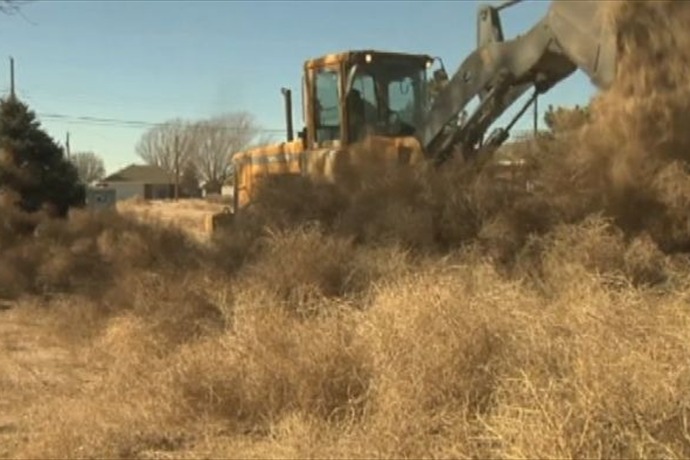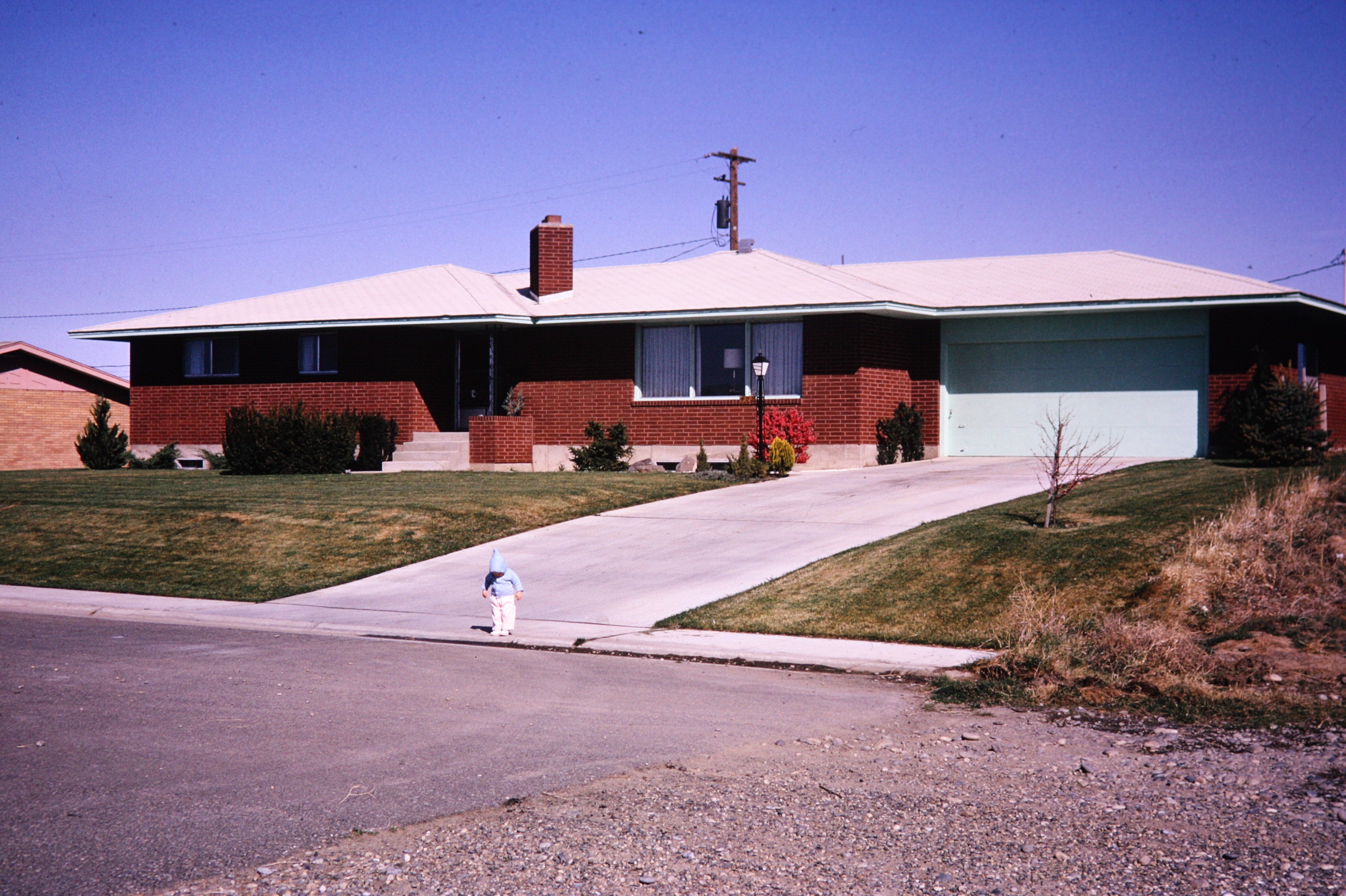 Did you see the story last week about tumbleweeds taking over the town of Clovis, New Mexico? The pictures of the piles of tumbleweeds as tall as tractors brought back childhood memories for me.
Did you see the story last week about tumbleweeds taking over the town of Clovis, New Mexico? The pictures of the piles of tumbleweeds as tall as tractors brought back childhood memories for me.
The house my parents built in Richland, Washington, in 1962 was at the end of a one-block street. Past our house was an unpaved bulldozed path as wide as our street that cut from our block to another paved road, but there were no homes on the street beyond ours. All the houses were new, and all made of brick. They were solid, but I remember the wind whistling outside the windows of my corner bedroom. It howled and moaned, keeping me awake at night.

In the vacant lot next to our house was an open pit, its floor and sides made of sand and rocks worn smooth, where the Columbia River had dumped them eons ago. I don’t know why the pit was there. Maybe it had been dug for the foundation of another house that never got built. Or maybe it was a scar left by someone who had moved the dirt from that land elsewhere.
The pit was full of tumbleweeds. The pit must have been in line with the prevailing winds, because it filled with dead plants, blown into mounds higher than my head—they seemed as high as the piles I saw from New Mexico last week.
The pit became a playground for my brother and me. We pulled the tumbleweeds from their windblown heaps into masses that defined forts and rooms where we could hide, much like other children might build snow castles. My brother sculpted his room, and I designed mine, and like all good Western soldiers, we scouted for the Indians that might attack from downhill.
We uncovered red ant hills under the weeds and tormented the ants by kicking their homes into oblivion—at least the portions we saw above ground. Occasionally, we saw a snake, but that was enough to send me running for the house. And we were always on the look-out for black widow spiders—my parents had found thirty of them around our house in the first year we lived there.
Our forts lasted until the next windstorm, when the wind blew in new tumbleweeds and our careful architecture disappeared.
Many of the tumbleweeds were skinny-sticked plants, the skeletons of Queen Anne’s lace and similar flowering spindles. They weren’t difficult to handle, but they were also fragile. Walls built of these weeds toppled easily.
Our hardiest tumbleweeds were Russian thistles. Their thorny branches interlocked into fine fortresses. But those spikes prickled and pierced our skin if you leaned into them or picked them up without gloves. And what seven-year-old keeps her gloves handy?
Russian thistles, I later learned, were not native to the U.S. Some think they tagged along with the flax and wheat and other crops imported from Russia to the Dakotas in the 1870s. These crops flourished on the steppes of Russia, and farmers wanted to try them on the northern plains of our country.
Unfortunately, Russian thistles flourished in the West as much as the crops. And they thrived in the semi-arid land of Eastern Washington.
Russian thistles do provide forage for animals, but most humans hate their appearance and messy remains, and their pollen causes as many allergies as hay or alfalfa. My brother and I would suffer for days after building our tumbleweed warrens.
This winter we have alternated between warm days and cold in Kansas City. Every front that has passed through has brought strong winds—40 mile-an-hour gusts have been common.
The winds have brought back other memories of my youth beyond tumbleweeds. The defining weather pattern in Richland was wind, which blew east up the Columbia Gorge from the Pacific Ocean, all the way to Richland and beyond. Once I was too old to play with tumbleweeds, I came to hate the wind.
In high school, as I walked home from the bus stop on winter afternoons, I remember the wind being far worse than the cold. There were many days when I had to brace myself to keep from staggering like a drunk as I walked. My journey home seemed to take forever as I scrambled over the rocks of the unpaved path at the end of our block. Of course, I only weighed 92 pounds at the time.
What memories has this winter’s weather brought back of your childhood?




What fun, building forts with tumbleweeds! My sister and I used cardboard boxes and my moms sheets…she never liked that.
This brutal winter reminded me of the Blizzard of 1978. I was 12 years old and had never walked in snow that deep. Schools were closed for 10 days, it was great!
I guess I thought it was fun at the time. But looking back on it, all I remember is the prickly thorns.
Our schools were never closed for 10 days — two snow days in a row was a lot!
Thanks for reading,
Theresa
[…] that summer. Richland, Washington, is on the Columbia River in the middle of the desert. There are a lot of tumbleweeds, and, if not for the Columbia, it would be pretty […]